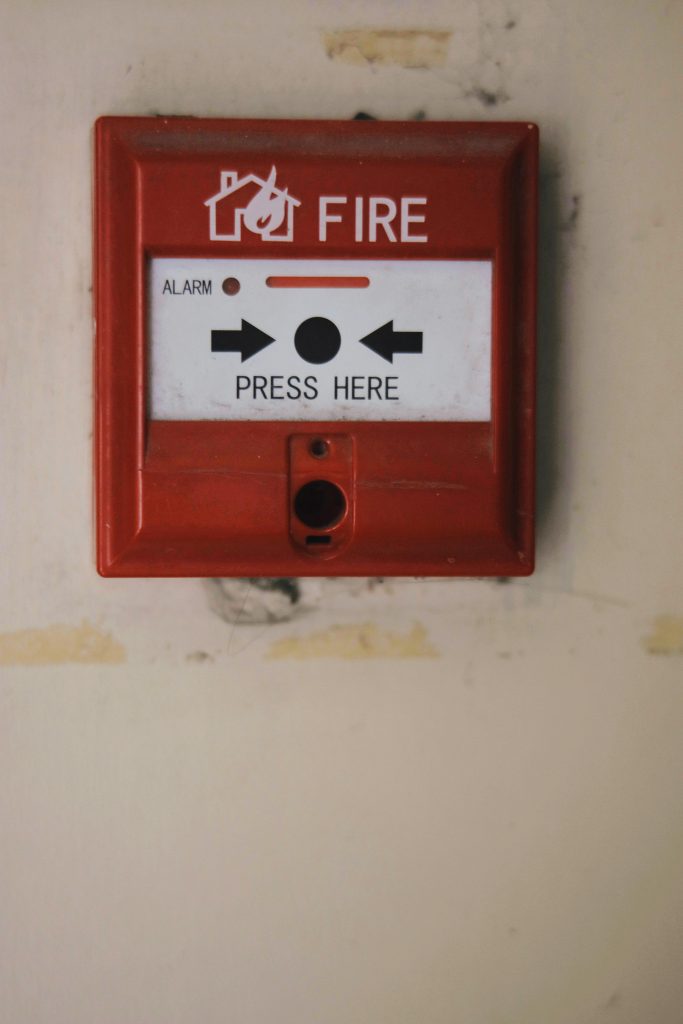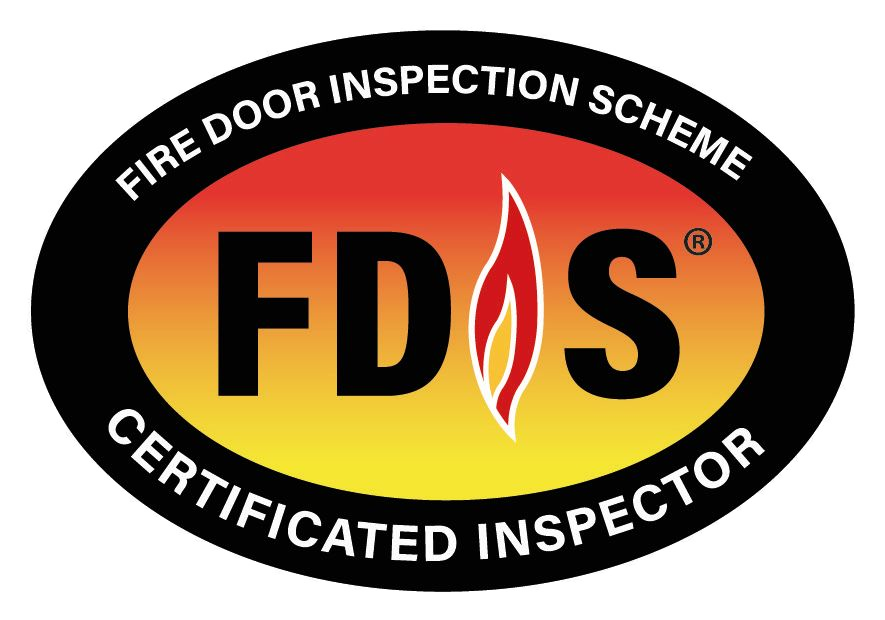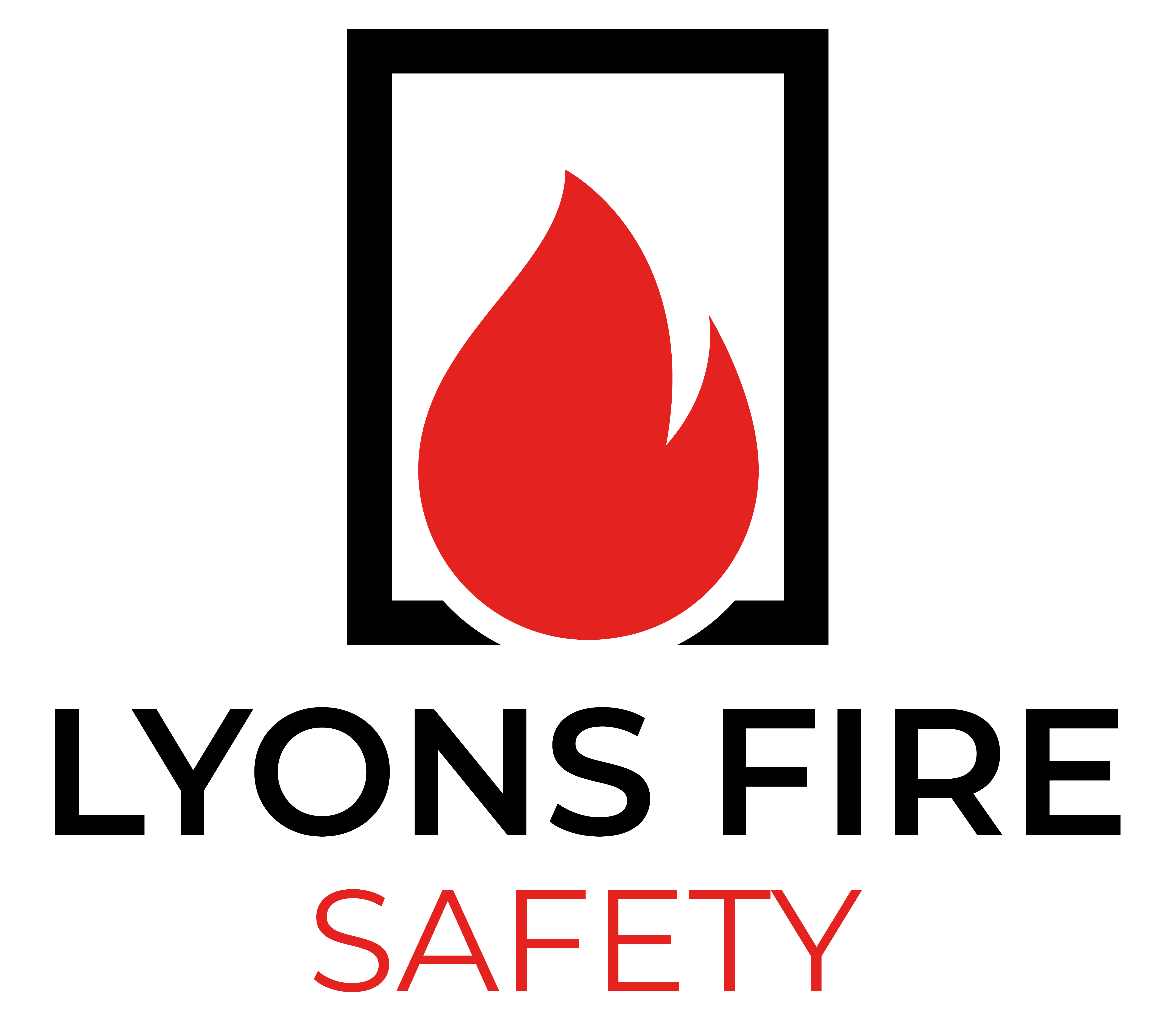The Importance of Fire Safety Training in the Workplace
At Lyons Fire Safety (LFS), we’re committed to helping UK businesses navigate the complex world of fire safety regulations. While we specialise in fire door inspections, installations, and maintenance, we understand the critical role that comprehensive fire safety measures play in safeguarding properties and lives across the United Kingdom.
Today, we’ll explore the crucial topic of fire safety training in the workplace and its importance in creating a safer environment for employees and visitors alike.
At LFS, we provide fire door inspections, installations and maintenance, which are all critical when it comes to resolving fire safety, and passive fire protection, issues.
What is Fire Safety Training?
Fire safety training is a systematic approach to educating employees about fire risks, prevention strategies, and appropriate responses during fire emergencies. It’s designed to equip staff with the knowledge and skills needed to prevent fires, respond effectively if one occurs, and ensure a safe evacuation if necessary.
Legal Requirements for Fire Safety Training in the UK
In the UK, fire safety training isn’t just a best practice—it’s a legal requirement. The Regulatory Reform (Fire Safety) Order 2005 mandates that employers provide adequate fire safety training to their staff. This legislation aims to ensure that all employees are aware of fire risks and know how to respond in an emergency.
Key components of legally compliant fire safety training include:
- Understanding fire risks specific to the workplace
- Knowing evacuation procedures and escape routes
- Familiarity with fire alarm systems and their activation
- Proper use of fire-fighting equipment

Benefits of Fire Safety Training
Implementing a comprehensive fire safety training programme brings substantial benefits to both employees and the overall safety of the workplace. These advantages extend beyond mere compliance with regulations, deeply influencing daily operations and long-term safety outcomes.
Enhanced Safety Awareness Among Employees
A well-structured fire safety training programme fosters a culture of safety within the workplace. Employees gain a clear understanding of potential fire hazards specific to their work environment.
For instance, in a manufacturing setting, employees might learn about the risks associated with flammable materials and machinery. This awareness empowers them to adopt preventive measures, such as proper storage of chemicals and routine checks on equipment, reducing the likelihood of incidents.
Reduced Risk of Fire-Related Incidents and Injuries
Training equips employees with the knowledge and skills to prevent and respond to fires effectively, leading to a marked decrease in fire-related incidents.
For example, by understanding how to handle electrical faults and recognising the signs of overheating machinery, employees can address potential issues before they escalate into a fire. This proactive approach minimises the risk of fires starting and, consequently, the chances of injuries and property damage.
Improved Emergency Response Times
Effective training ensures that employees are well-prepared to act quickly and efficiently during a fire emergency. During practice fire drills, employees learn to navigate evacuation routes, use fire-fighting equipment, and follow emergency procedures.
For instance, knowing the quickest exit routes and how to operate fire extinguishers under pressure can significantly improve response times, allowing for faster and safer evacuations. This preparedness can be the difference between a contained incident and a catastrophic event.
Increased Confidence in Handling Fire Safety Equipment
Confidence in using fire safety equipment is a crucial outcome of hands-on training. Employees become familiar with various types of fire extinguishers, fire blankets, and alarm systems.
For example, a staff member trained in operating a CO2 extinguisher will know exactly when and how to use it to effectively tackle electrical fires. This familiarity not only ensures the proper use of equipment during emergencies but also reduces the likelihood of mishandling, which can be crucial in high-stress situations.
Compliance with UK Fire Safety Regulations
Adhering to legal requirements is a fundamental aspect of any fire safety programme. Regular and thorough training helps businesses comply with the Regulatory Reform (Fire Safety) Order 2005 and other relevant legislation. By providing employees with the necessary training, businesses demonstrate their commitment to meeting legal obligations, thereby avoiding potential fines and legal repercussions.
For example, businesses that regularly update their training materials and conduct fire drills are better positioned to comply with regulatory inspections and audits.
The benefits of fire safety training extend well beyond regulatory compliance. By:
- Enhancing safety awareness
- Reducing risks
- Improving emergency responses
- Increasing confidence in using safety equipment
- Ensuring regulatory adherence
A robust fire safety training programme significantly contributes to a safer and more prepared workplace. Investing in such training not only protects employees and property but also fosters a proactive safety culture that can positively impact the overall operations of the business.
Key Elements of an Effective Fire Safety Training Programme
A comprehensive fire safety training programme should cover:
- Fire prevention techniques
- Identifying and reporting potential fire hazards
- Understanding the behaviour of fire and smoke
- Proper use of fire extinguishers and other fire-fighting equipment
- Evacuation procedures and assembly points
- Roles and responsibilities during a fire emergency
Implementing Fire Safety Training in the Workplace
To create an effective fire safety training programme:
- Assess your workplace’s specific fire risks
- Develop tailored training materials
- Schedule regular training sessions and fire drills
- Use a mix of theoretical and practical training methods
- Keep detailed records of all training activities
- Review and update your training programme regularly
Challenges in Fire Safety Training
Common obstacles in implementing effective fire safety training include:
- Lack of employee engagement
- Time constraints in busy work environments
- Keeping training materials up-to-date with changing regulations
- Addressing diverse learning styles and language barriers
To overcome these challenges:
- Use interactive and engaging training methods
- Incorporate fire safety training into regular work schedules
- Partner with fire safety experts to ensure current, relevant content
- Offer training in multiple formats and languages as needed
The Role of Professional Fire Safety Services
While LFS doesn’t provide fire safety training directly, our expertise in fire door inspections, installations, and maintenance complements a comprehensive fire safety strategy. Correctly maintained fire doors are crucial for containing fires and protecting evacuation routes—key aspects often covered in fire safety training.
Our services ensure that your passive fire protection measures align with the knowledge imparted during fire safety training, creating a cohesive approach to fire safety in your workplace.
FAQs - Fire Safety Training
How often should fire safety training be conducted?
Fire safety training should be provided to new employees during induction and refreshed at least annually for all staff. However, more frequent training may be necessary in high-risk environments.
Who is responsible for ensuring fire safety training in the workplace?
The responsibility typically falls on the employer or the designated ‘responsible person’ as defined in the Regulatory Reform (Fire Safety) Order 2005.
What's the difference between fire safety training and a fire drill?
Fire safety training provides comprehensive education about fire risks and prevention, while a fire drill is a practical exercise simulating an evacuation during a fire emergency.
Can online fire safety training replace in-person training?
While online training can be a valuable supplement, it’s generally recommended to combine it with hands-on, practical training for the best results.
How does fire door maintenance relate to fire safety training?
Properly maintained fire doors are crucial for containing fires and protecting evacuation routes—key aspects often covered in fire safety training. Regular inspections and maintenance, such as those provided by LFS, ensure that the physical fire safety measures align with the procedures taught in training.
Are there specific fire safety training requirements for different industries?
Yes, different industries may have specific training requirements based on their unique fire risks. It’s important to tailor training to your specific workplace environment.
How can I measure the effectiveness of our fire safety training programme?
You can assess effectiveness through post-training quizzes, observing behaviour changes, monitoring incident rates, and gathering feedback from employees.
Choose Lyons Fire Safety for Comprehensive Fire Safety Solutions
At Lyons Fire Safety, we’re dedicated to providing exceptional fire safety solutions, ensuring the highest level of safety and compliance for our clients across the United Kingdom. While we don’t offer fire safety training directly, our expertise in fire door inspections, installations, and maintenance plays a crucial role in supporting your overall fire safety strategy.
Don’t compromise on fire safety. Contact us today to schedule an assessment of your fire doors and other passive fire protection measures. Our experts will identify any issues, provide recommendations, and implement effective solutions to ensure your building’s fire protection is robust and compliant with regulations.
Phone: 0121 517 0562
Email: david@lyonsfiresafety.co.uk
Lyons Fire Safety: Your Trusted Partner for Fire Door Solutions, Maintenance, and Compliance in the UK.


